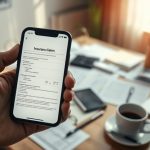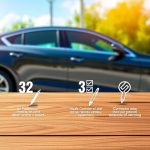Can you really file a vehicle insurance claim if you don't own the car? It's a common scenario that can lead to confusion, but understanding the process is essential. First, you need the vehicle owner's permission and their insurance details. Next, gathering documentation is key. With the right steps, you can navigate the claims process smoothly and effectively. What you do next could greatly impact your claim's success.
When you find yourself in an accident, it's important to act swiftly—your first step should be to contact your insurance provider immediately. Even if you don't own the vehicle involved, your insurance can still play an essential role in the claims process. You'll need to provide specific information about the accident, including the year, make, and model of the vehicle you were driving, along with the insurance details of the vehicle's owner, if applicable. Non-owner car insurance can help protect you in these situations.
In an accident, promptly contact your insurance provider, even if you don't own the vehicle involved.
Make sure you gather contact information for other drivers involved in the incident and document any witness statements, as these will be significant for your claim.
Once you've initiated the claim, you must compile all necessary evidence. Photos of the vehicle damages from multiple angles can substantiate your claim, so take as many as possible. You'll also need copies of the driver's licenses for everyone involved, along with the insurance policy numbers.
Make detailed notes of conversations with other drivers or witnesses, as these can be important during the investigation. If the police were called to the scene, secure the police report number, as it's a crucial piece of documentation for establishing liability. A police report can serve as crucial evidence of the accident and fault.
Insurance adjusters will then take over the investigation. They'll assess the damages and review the police report, accident details, and witness interviews to determine liability. If there are any injuries, they'll also analyze medical reports.
It's important to cooperate fully with the adjuster, as their findings will directly affect the outcome of your claim. Make sure to provide them with all the evidence and documentation you've gathered.
In terms of the types of claims you may be eligible for, collision coverage is important for vehicle repairs, while liability coverage will address damages to others involved. If you've sustained personal injuries, look into personal injury protection, which can assist with medical expenses.
Uninsured motorist coverage may also come into play if the other driver lacks adequate insurance.
To file your claim, you can use your insurance provider's phone line, app, or website. After filing, a claims adjuster will be assigned to your case. They'll conduct an inspection of the vehicle, and if everything checks out, they'll process payment after deductibles are accounted for.
Once all damages are addressed, the claim will be officially closed. If your policy includes rental car coverage, you may also receive assistance in securing a rental while your vehicle is being repaired. Towing services may be available if your vehicle isn't drivable.
Finally, the insurance payout for repairs will typically occur minus your deductible, and subrogation might be utilized to recover those deductibles from at-fault parties. By understanding this process, you can navigate your vehicle insurance claim effectively, even without ownership of the vehicle involved.
Conclusion
To sum up, claiming vehicle insurance without ownership is possible when you have the owner's permission and the right documentation. For example, if you borrowed a friend's car and were involved in an accident, gathering evidence like photos and a police report can help support your claim. By clearly communicating your role and cooperating with the insurance adjuster, you can navigate the claims process effectively, ensuring that both you and the vehicle owner are adequately protected.





